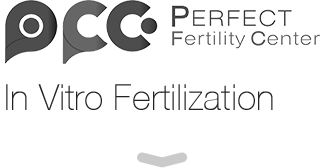
PFC offers the In Vitro Fertilization (IVF) procedure for single women, couples, and same-sex couples. In vitro fertilization (IVF) involves a series of complex procedures, including the administration and monitoring of medications which stimulate the ovaries to produce multiple eggs; the retrieval, fertilization and laboratory culture of these eggs; and the growth and eventual transfer of viable human embryos into the uterus. IVF creates an environment, which allows for maximal interaction between as many eggs and sperm as possible, and fosters the creation of multiple embryos, which can then be introduced directly into the uterus under highly optimized conditions.
When is IVF Recommended?
IVF may be recommended when other treatments (such as intrauterine insemination, IUI) have not been successful, or immediately as a first step in treatment. Such cases occur when there is severe male factor infertility or severe female factor infertility such as advanced endometriosis, tubal obstruction advanced age, or poor ovarian reserve.

The IVF Process
In Vitro Fertilization (IVF) is an assisted reproductive technology procedure (ART) in which a women’s eggs are fertilized by sperm in a laboratory instead of inside the fallopian tube (in –vivo). IVF is the most advanced ART procedure available today, and it is a highly effective, safe form of fertility treatment which has evolved over 25 years.
Every cycle of IVF involves multiple steps, and each occurs at a specific time during a four to six-week period. The following is an overview of the IVF process, which begins in the month proceeding the actual IVF treatment cycle.
- Medications to grow multiple eggs; average 9-11 days
- Retrieval of eggs from the ovary or ovaries
- Insemination of eggs with sperm, fertilization, ICSI
- Culture of any resulting fertilized eggs (embryos) for several days (2-5 days)
- Placement (“transfer”) of one or more embryo(s) into the uterus
- Support of the uterine lining with hormones to implant and sustain pregnancy
- In select and indicated cases, these additional procedures can be employed:
- Intracytoplasmic sperm injection (ICSI) to improve the fertilization rate:
- Assisted hatching of embryos to increase the chance of embryo attachment (“implantation”)
- Embryo cryopreservation (freezing) to allow for future potential use of quality embryos
An IVF cycle typically includes the following steps/procedures:
IVF & ICSI
ICSI is the great equalizer for male factor infertility and allows for optimization of egg fertilization. ICSI, or intracytoplasmic sperm injection is a technique that injects the sperm into the egg. Its use came of age in the late 1990s and has been considered one of the landmark breakthroughs in fertility treatment. Sperm used in the ICSI technique can be freshly ejaculated or frozen and thawed without any compromise in efficacy. ICSI is so powerful that even men without sperm in their ejaculate or very low numbers can have children using this procedure once the sperm is surgically harvested directly from the testes or vas deferens.

Although ICSI is not necessary for all IVF cases, it is often recommend to improve fertilization rates especially when egg yield is compromised. Please note that ICSI per se does not increase the risk over non-ICSI standard IVF for children born with these procedures as compared to infertility patients in general.

IVF Success Rates
The physicians of PFC maintain availability of all assisted reproductive resources to their patients in order to treat them the way they want to and should be treated. We will always provide a balanced and transparent assessment of prognosis with options and alternatives. Ultimately, pregnancy success rates and delivery success rates are directly related to embryo quality and /or egg quality which are biologically intrinsic to the process.
- -The age of the woman when she is using her own eggs.
- -The number of embryos that are transferred.
- -The quality of the embryos, i.e. its genetic integrity which is a derivative of egg and sperm (gamete) quality.

